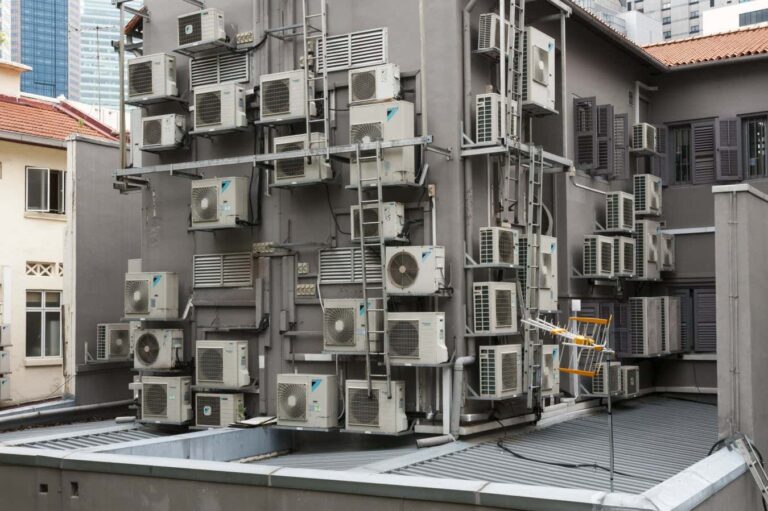

Air-con items devour power, with cooling accounting for about one-fifth of a constructing’s whole electrical energy use
John Elk III/Getty Photos
Cooling techniques with no transferring components or environmentally dangerous refrigerant liquids or gases work almost twice as effectively as commonplace air-con techniques, which might cut back electrical energy utilization.
Most air conditioners and fridges depend on compressing and increasing fluid to soak up or launch giant quantities of warmth. Whereas these techniques are comparatively low-cost and easy to provide, they don’t seem to be very environment friendly and subsequently require giant quantities of power (accounting for a few fifth of the electrical energy utilized in buildings globally), and lots of the coolants used are dangerous to the setting.
Now, Emmanuel Defay and colleagues on the Luxembourg Institute of Science and Expertise have developed a coolant-free refrigeration gadget produced from the metals lead, scandium and tantalum. Its most effectivity can attain over 60%, which is nearly twice that of a typical single room air-con unit.
The expertise depends on a precept referred to as electrothermal cooling, wherein an electrical subject utilized to a fabric adjustments the path of the cost, inflicting a short lived enhance in temperature and a subsequent lower when the sphere is eliminated.
To create the cooling system, DeFei and his colleagues stacked eight strips of a fabric referred to as lead-scandium tantalate (electrothermal) and immersed them in a heat-carrying liquid, silicone oil. When the electrical subject is turned on and the metallic strip heats up, the fluid strikes to the appropriate, and when it cools, it strikes to the left, making a everlasting cold and hot zone with a temperature distinction of about 20°C.
These areas can be utilized as cold and hot shops, and oil may be circulated by way of pipes to chill or warmth rooms or objects as wanted.
Though the gadget is theoretically 67% environment friendly, the present design is about 12% environment friendly. Defay says this downside may very well be improved if a greater warmth conductor than lead-scandium tantalate is discovered.
“By combining identified components, we achieved state-of-the-art properties,” says Neil Mathur of the College of Cambridge. Utilizing skinny strips of electrothermal materials as an alternative of an entire block means it may be used with out damaging the fabric, he says. with out making use of a excessive electrical subject, thus offering higher cooling efficiency. Nevertheless, he added that the crew solely appeared on the cooling capabilities of the metallic strip stack itself, and it could be fascinating to see how the complete gadget works collectively.
theme:
- power and gas/
- materials science